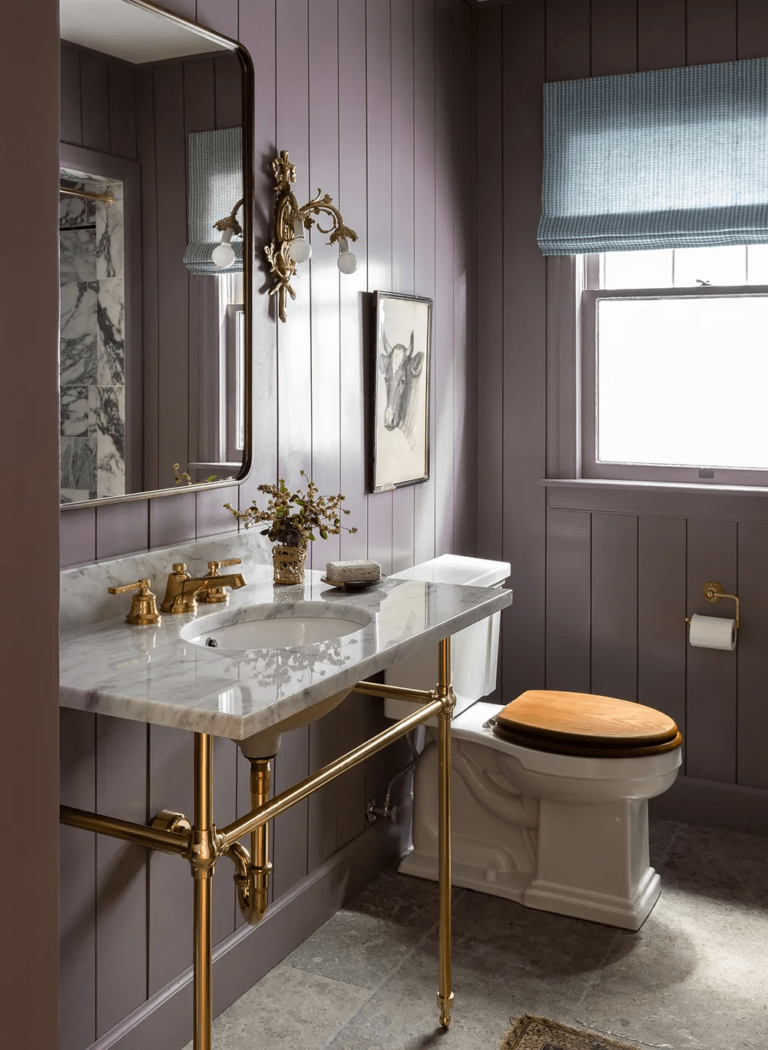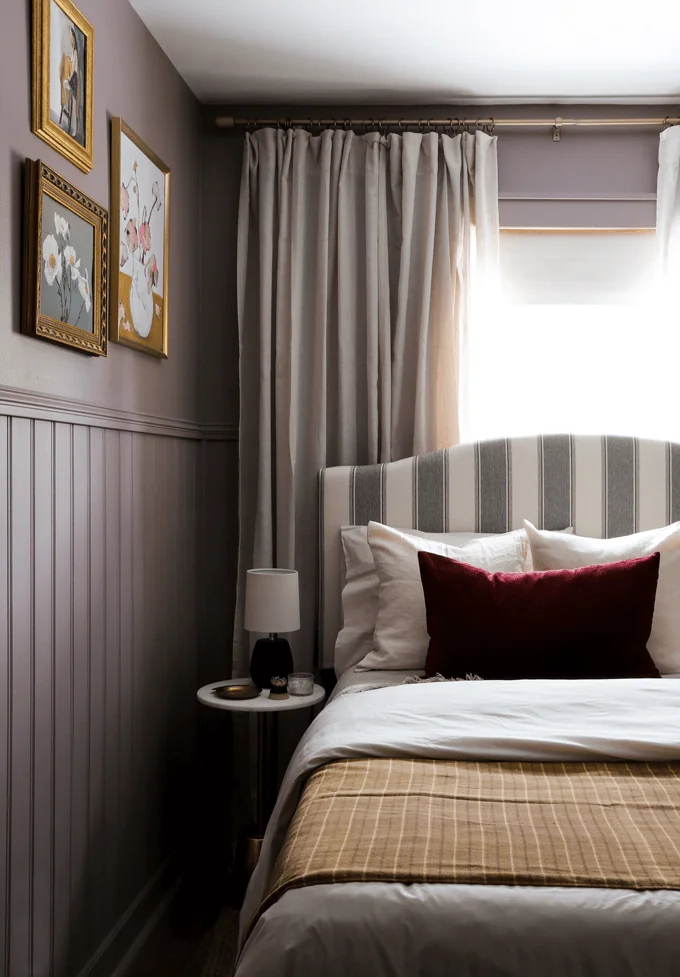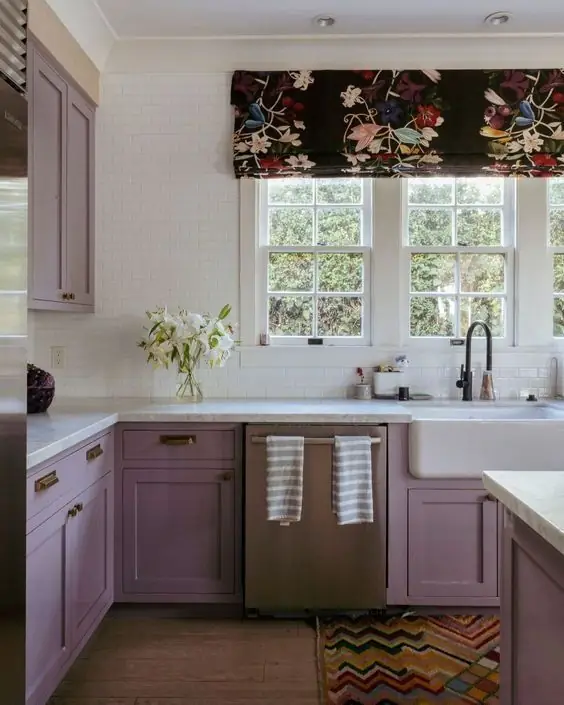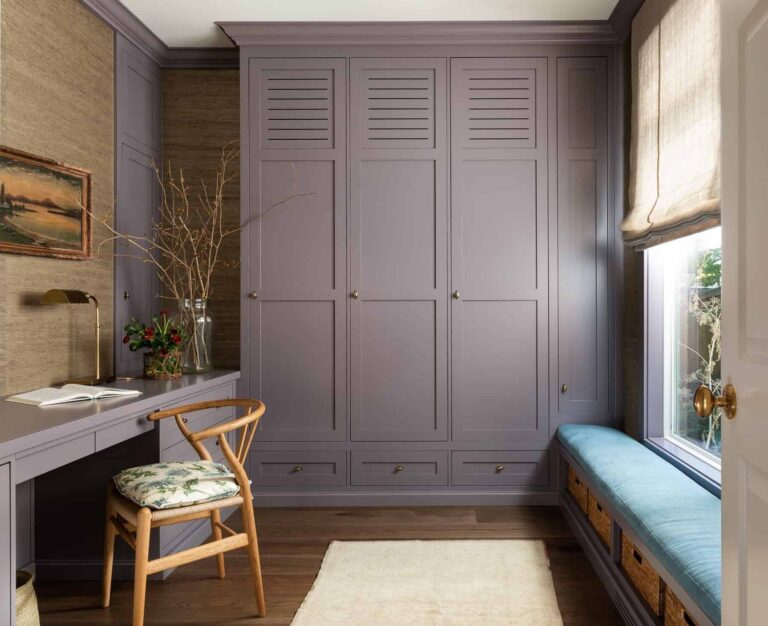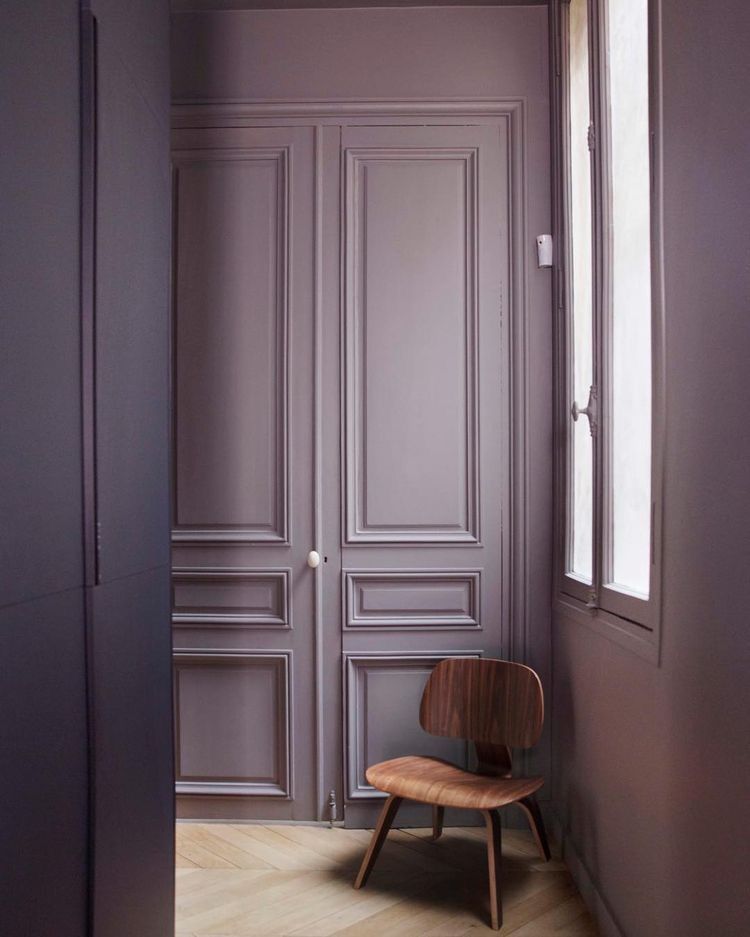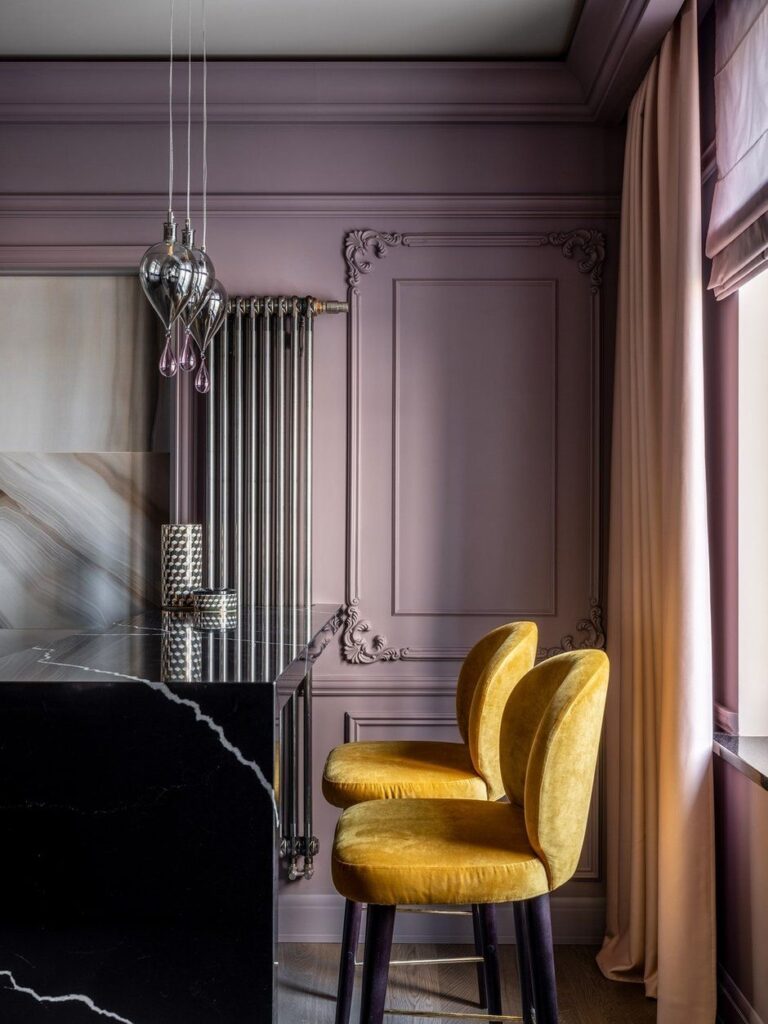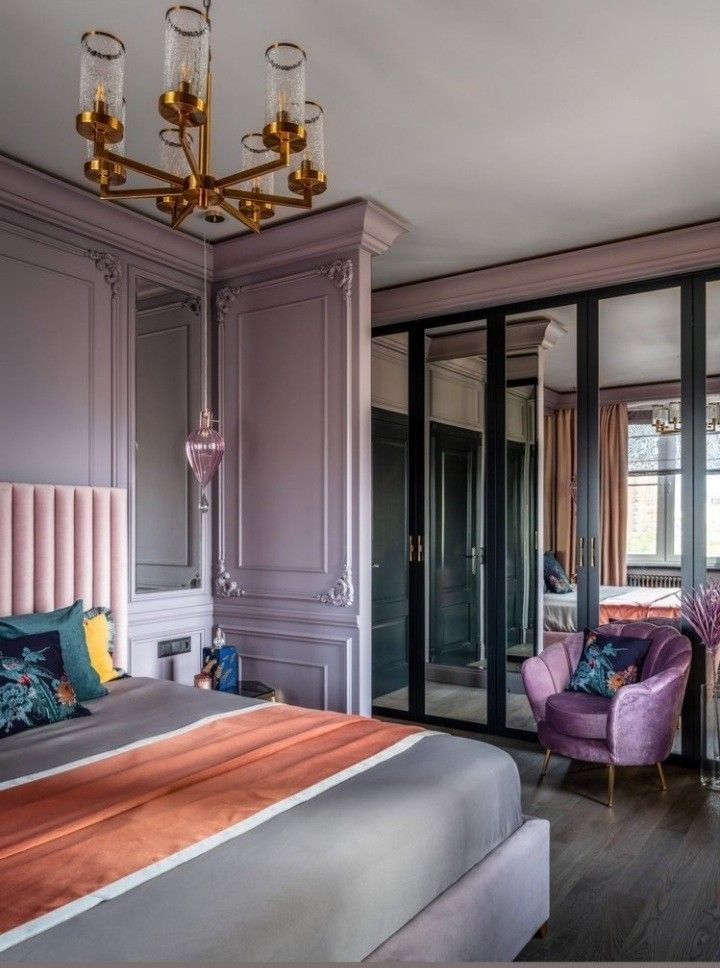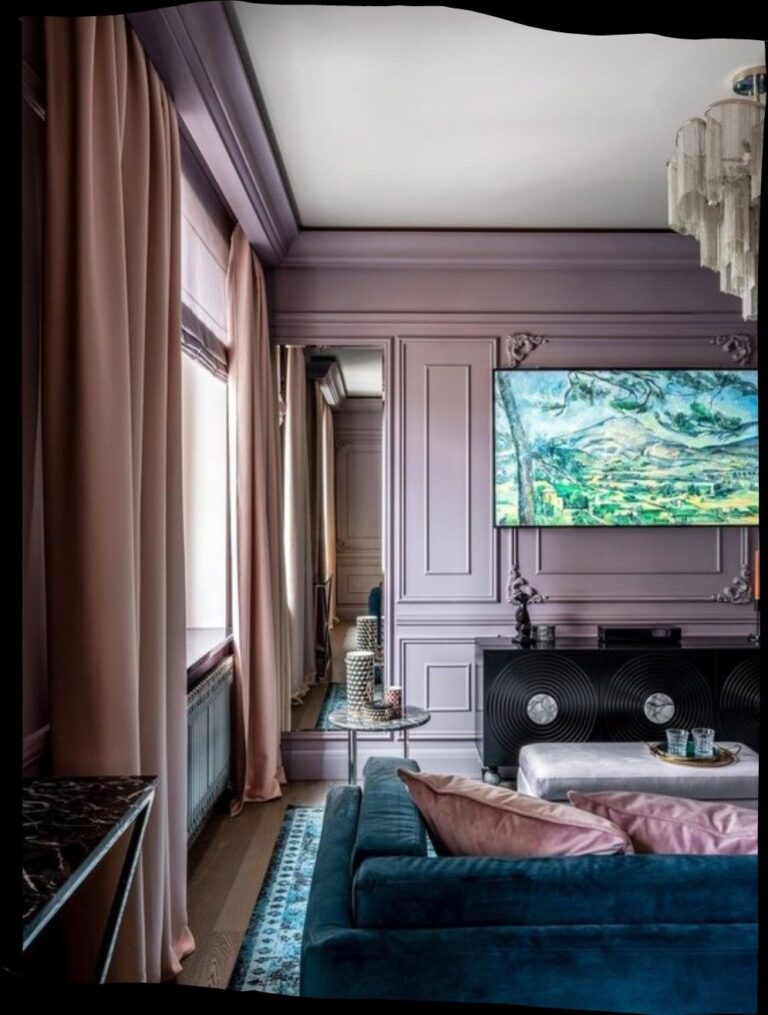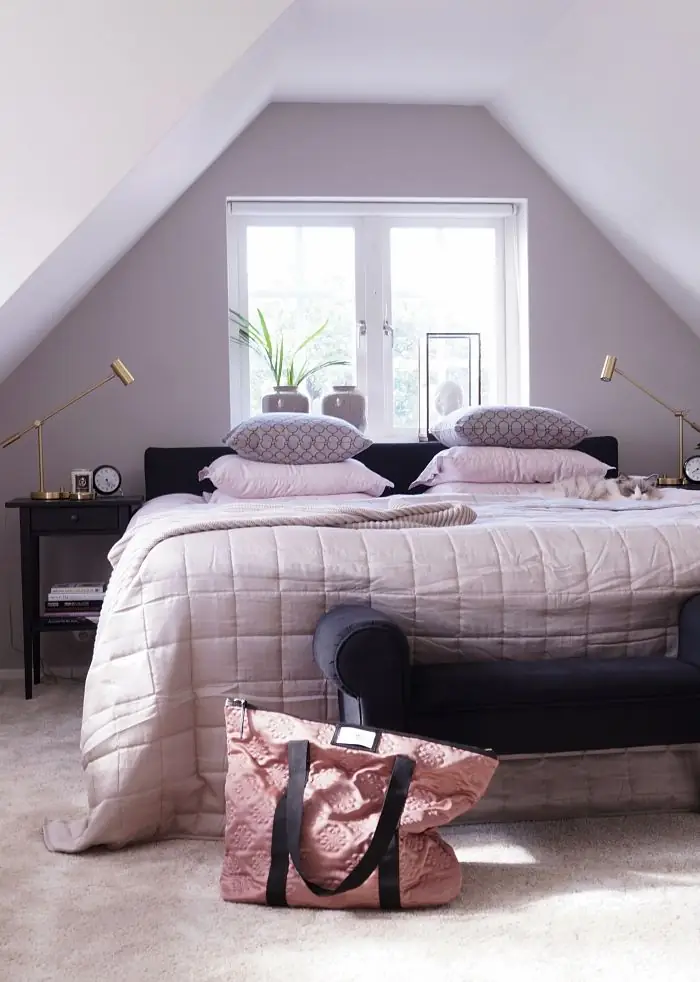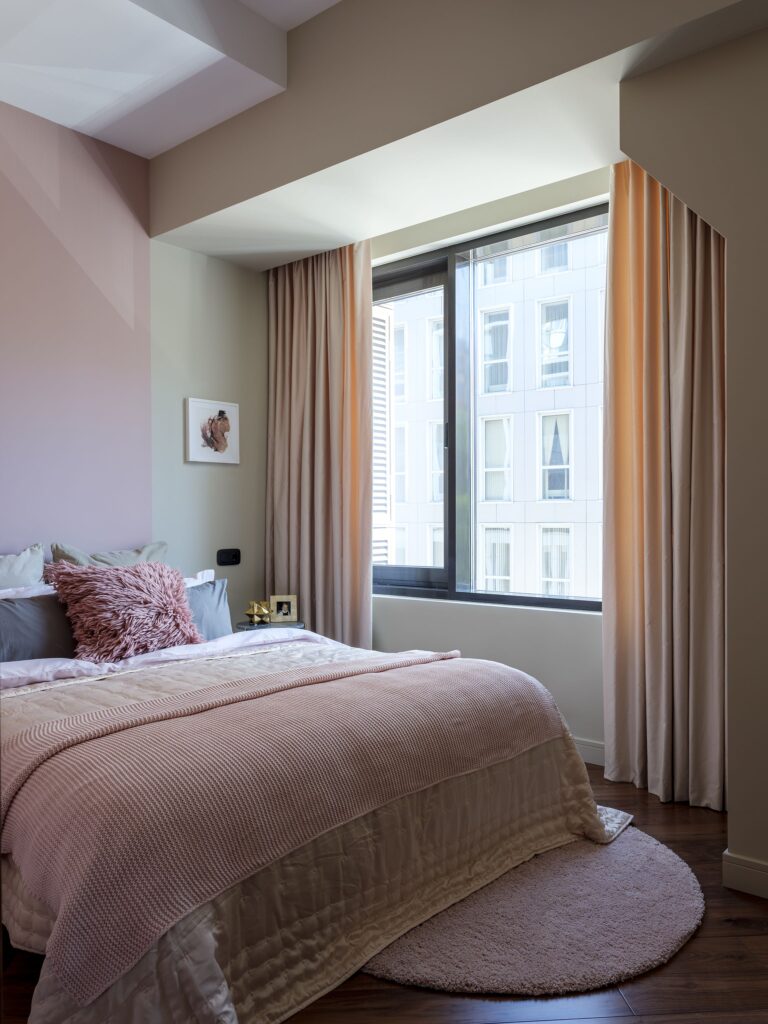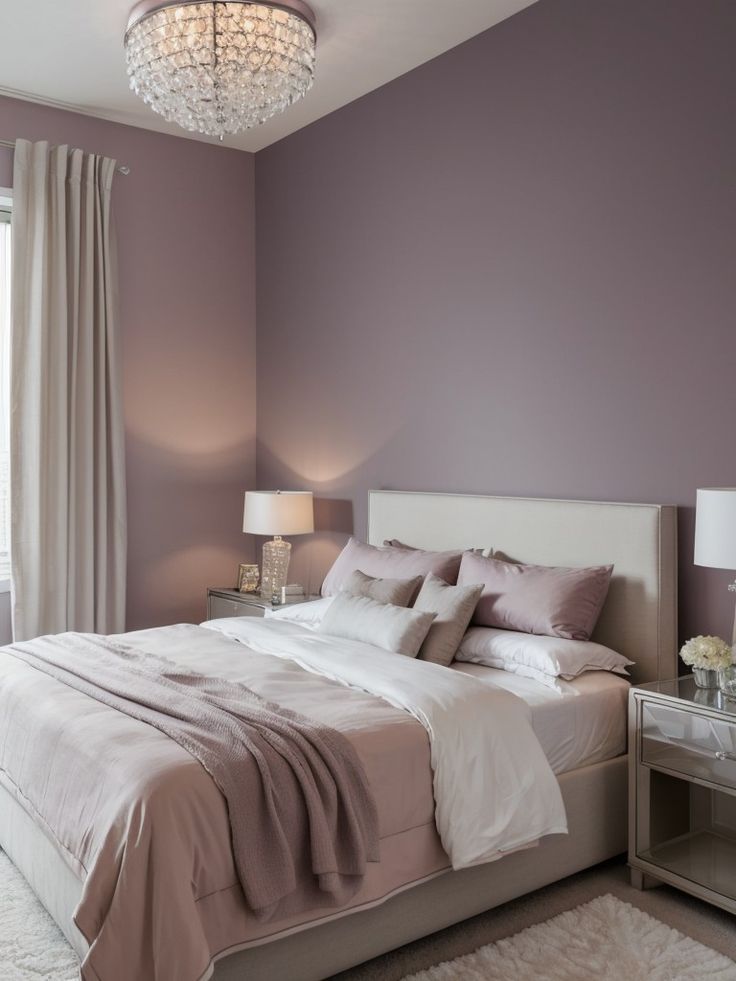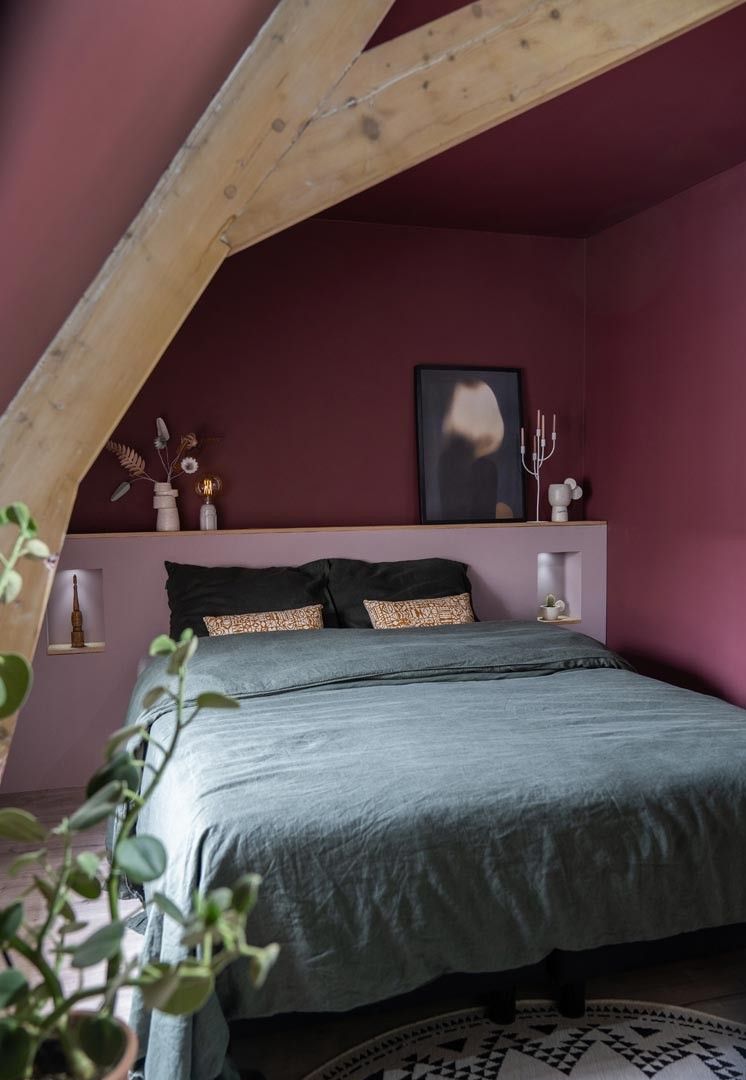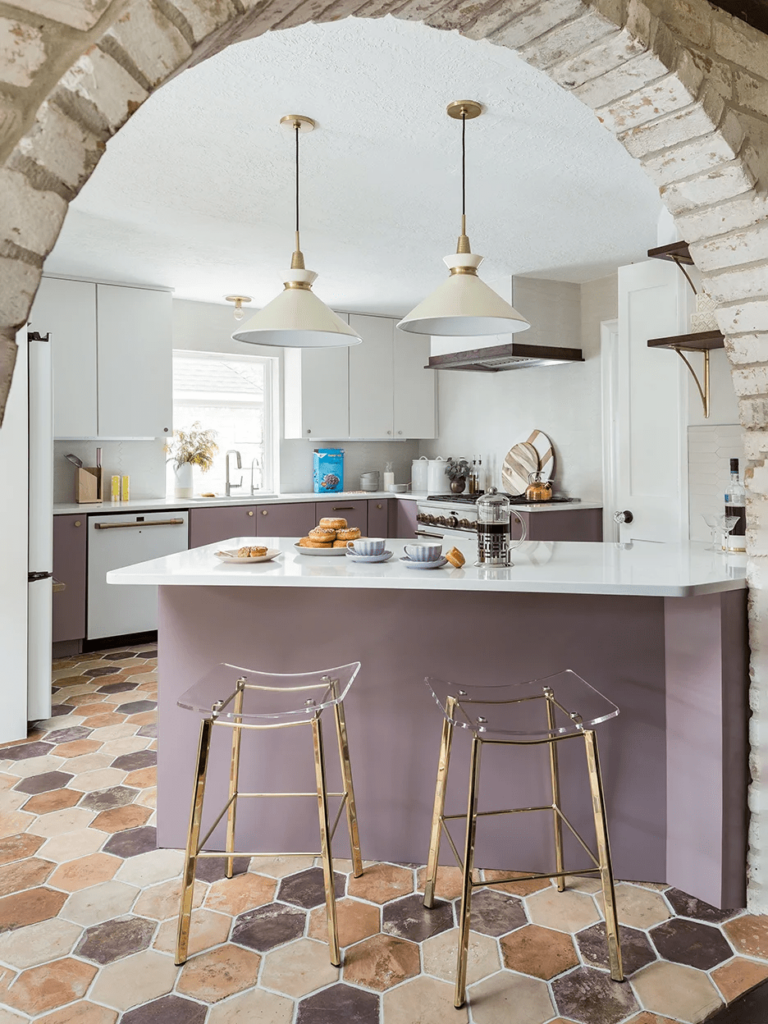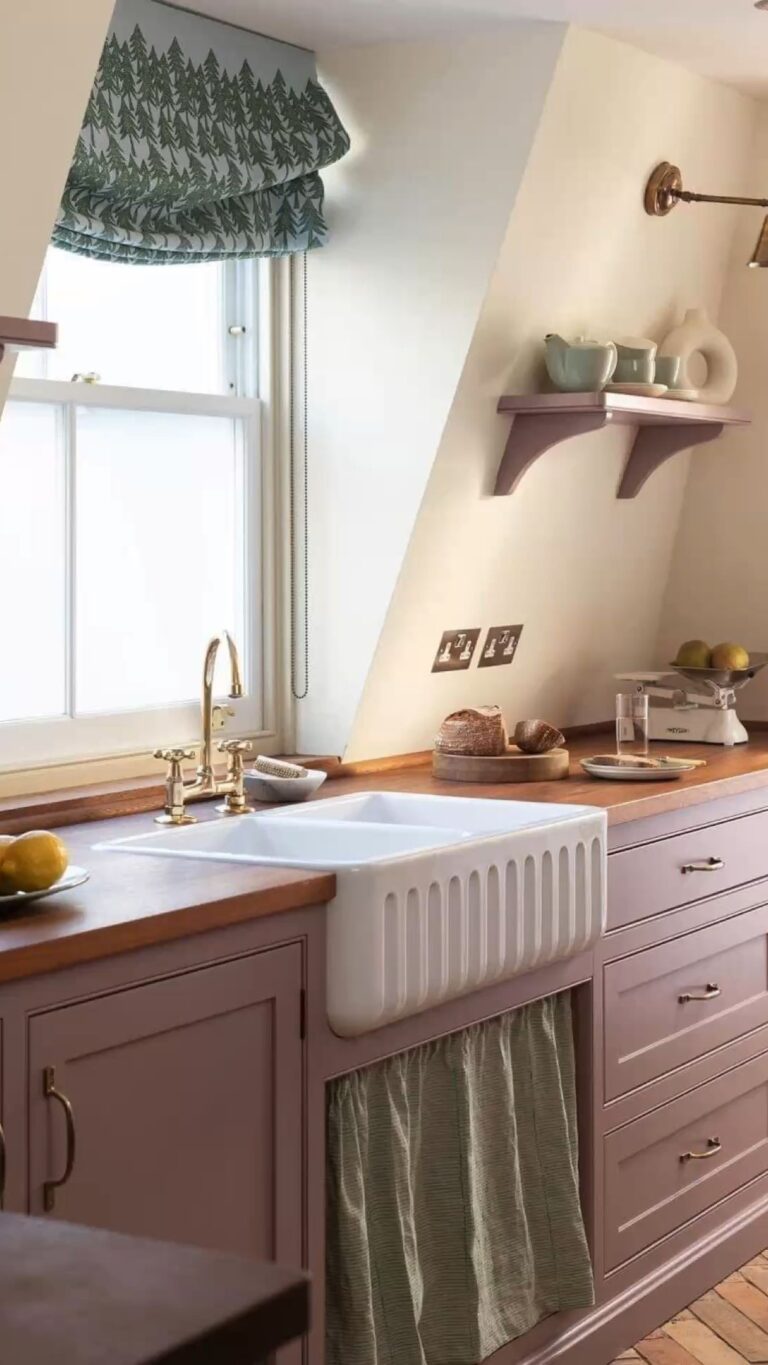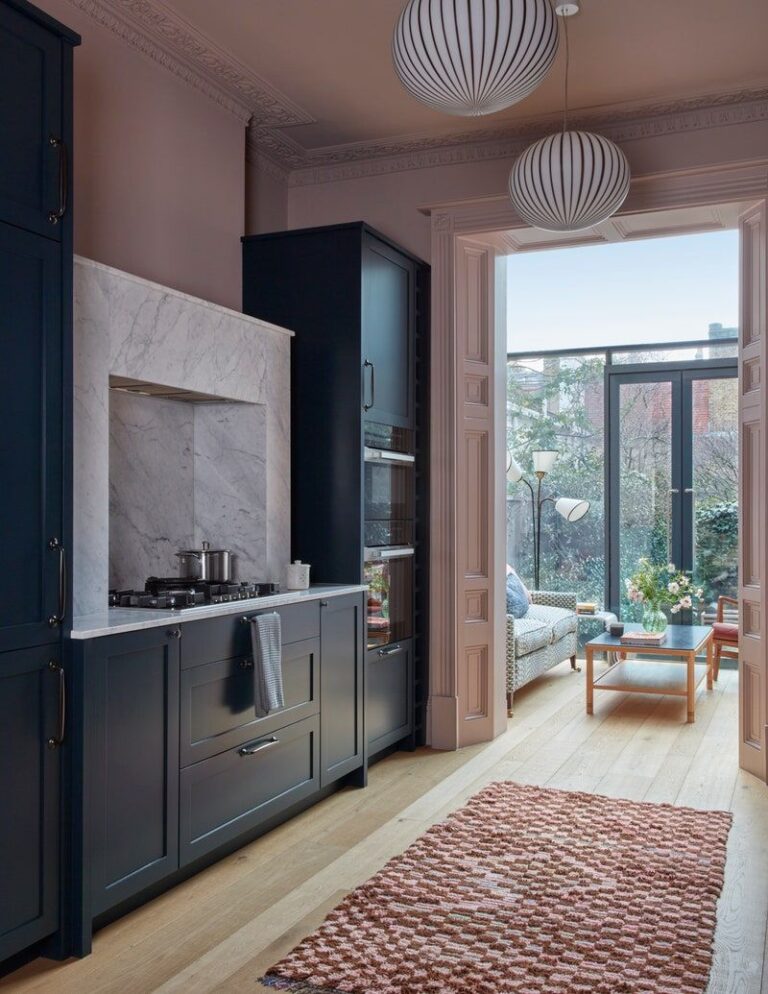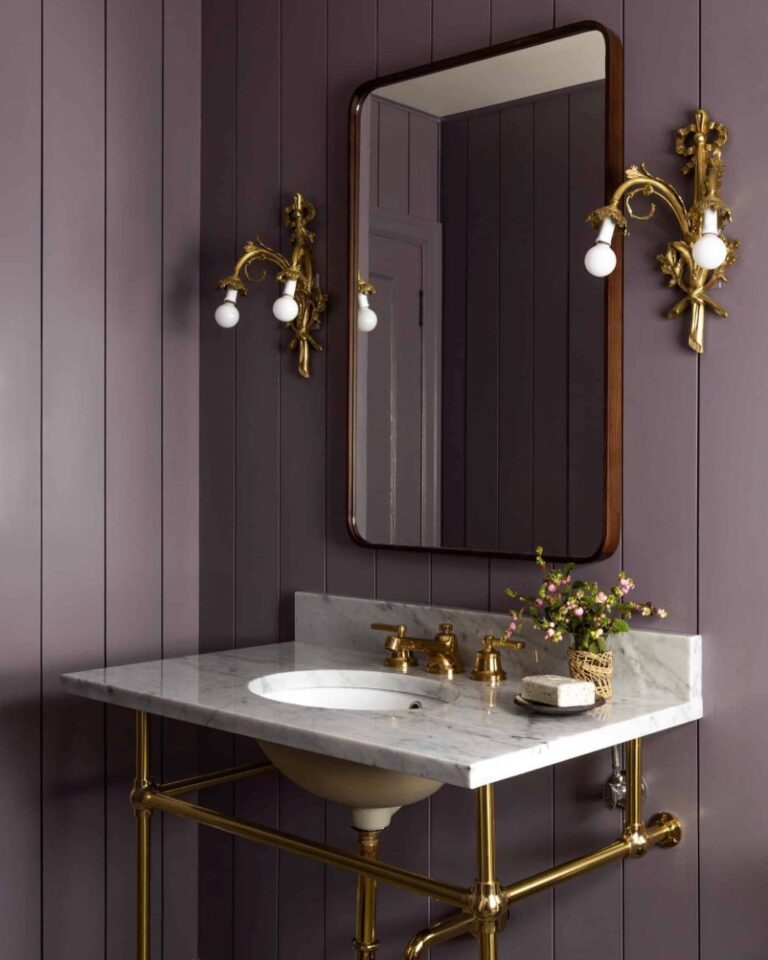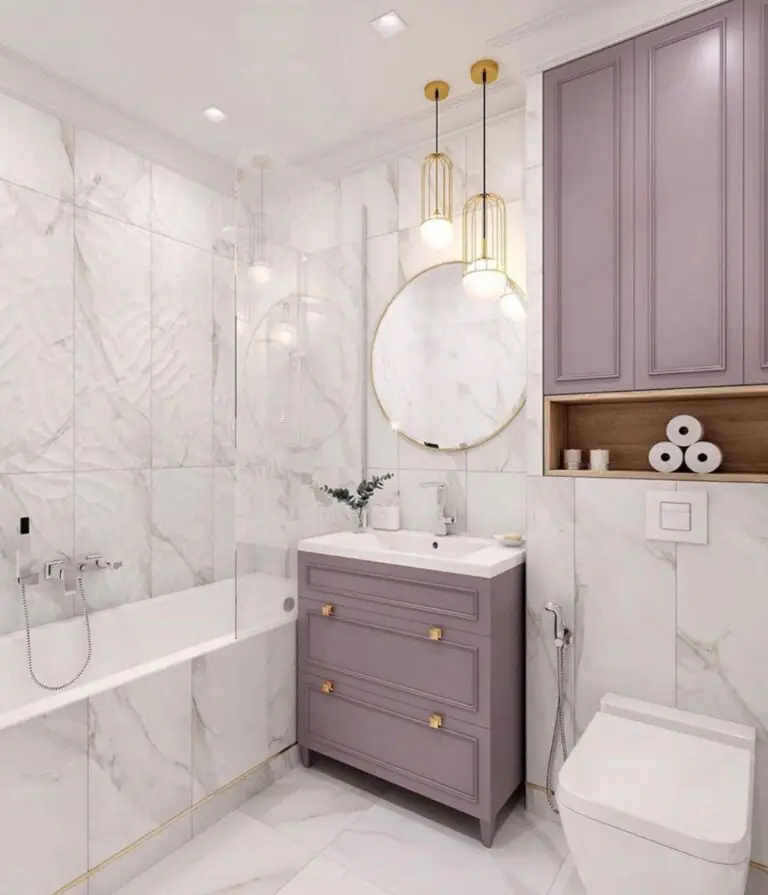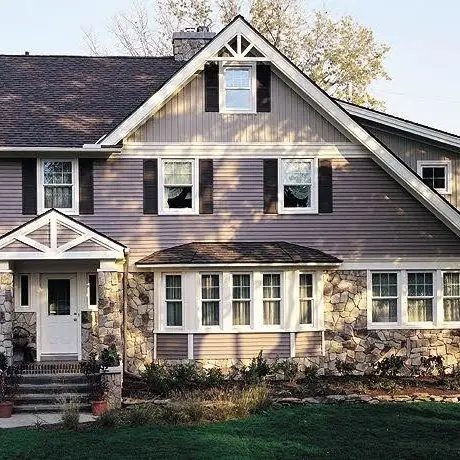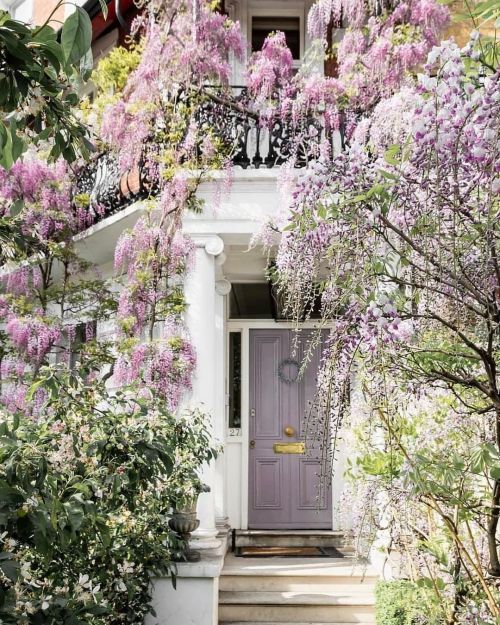Hazy Lilac 2116-40
Benjamin MooreA mid-tone dusty lilac with a saturated color base that beautifully blends elegance and comfort under one of the trendiest colors of the season.
Hazy Lilac 2116-40 (Benjamin Moore): What Color Is, Review, and Use
Violets are still on top, and Benjamin Moore’s 2024 palette brings to our attention one of the most precious lilac shades with a delightful name – Hazy Lilac. Partially saturated yet full of serene character, this mid-tone violet paint color is a go-to choice for those who like purples or haven’t tried violet in their homes yet. Why do interior designers and decorators alike love Hazy Lilac so much? Let’s find out!
Hazy Lilac Paint Color Features
In the past, violet was highly associated with royalty and luxury. Today, it has a closer link to emotions, inducing calmness, mystery, and modesty. At Hazy Lilac, we can witness the softest trace of gray embracing this most delicate lilac purple. It makes you feel at peace and secure at the same time. Like natural lilacs in full bloom, this violet tone brings so much charm and interest to a space. The best news is that Hazy Lilac works excellently as a primary paint color as well as an accent shade.
Hazy Lilac: Is It Warm or Cold?
We found the most exciting fact while checking the RGB value of Hazy Lilac used to determine how much red, green, and blue one can find in a color. Red is responsible for the warm temperature. At Hazy Lilac, the amount of red and blue is the same, slightly prevailing over green. Since violet is the result of blending blue with red, it explains why those two stand out. Still, this purple shade is undoubtedly warm.
How Does Lighting Affect Hazy Lilac?
Don’t expect a paint color to look the same as on the color sample in your interior. You better experiment with a sample in advance. Still, here is what you should expect. A considerably cooler gray-violet with a less saturated effect comes to the surface when using Hazy Lilac in a room with north-facing windows. Simultaneously, the warm natural light in a space with southern exposure will bring a warm pinkish pigment to an otherwise gray-purple.
In the morning, Hazy Lilac turns into the softest lilac under the breezy sun rays in rooms with eastern exposure. Yet, a muted lilac-pigmented taupe comes to the fore in the evening in a room with west-facing windows.
At night, you’ll witness a muted mushroom shade with violet undertones under artificial lighting.
Hazy Lilac LRV
From 0 to 100, this serene violet shade has a Light Reflectance Value of 29.15. It shows how much light a paint color reflects and determines how light or dark that color is. Hazy Lilac is a slightly dark mid-tone shade. If you ensure appropriate lighting conditions, this violet tone won’t overwhelm the space, and you can safely use it for all walls or an accent piece of furniture.
Hazy Lilac Undertones
Unsurprisingly, a violet shade named Hazy Lilac has no other pigments than a lilac color base and gray undertones responsible for its undeniable serene and foggy effect.
Similar Colors
The 2023 season has shown us that paint brands have plenty of violet shades to nurture our need for comfort and visual interest. Therefore, finding colors similar to Benjamin Moore’s Hazy Lilac wasn’t hard.
Coordinating Colors
If you decide to paint all walls in Hazy Lilac, choose between a bright white or darker gray for the trim. Generally, this charming violet pairs well with lighter purple shades, darker violet browns, and chocolate browns. To complement this lilac shade, look for creamy oranges or blue greens. Here are the expert recommendations:
Use of Hazy Lilac in Interior Design
Hazy Lilac perfectly works alone as well as paired with other neutral or bolder colors. You can use this foggy violet to create a calm and serene ambiance in your bedroom, add vibrancy to an overly neutral interior, or combine it with bright shades for a trendy, colorful palette. So, Hazy Lilac has much potential. Let’s go through the most stylish design ideas!
Countryside Lifestyle
Weathered and soft paint colors are indicative of countryside interiors. Hazy Lilac perfectly fits the purpose, adding flair due to its solid violet tone. Worn-out surfaces, plenty of naturally textured pieces, wooden furniture, vintage textiles, and accessories that have passed the test of time serve as flawless accents to display on a dusty lilac canvas.
Lilac Elegance
The once most luxurious color, violet, is a great color choice for Neoclassical interiors that need a modern twist. Hazy Lilac looks sophisticated on wall molding, so peculiar to the design style. Since we also speak Modern, replace the traditional neutral shades with complementary colors for violet, such as blue-greens or oranges. Enjoy the blend of Classic and Contemporary that tastefully unfolds under this most gorgeous color combination.
Bedroom
If you like the comfort of moody color palettes in your bedroom, you cannot skip the comfiest deep violet from Benjamin Moore. It surrounds the space like a cocoon and keeps all worries at bay. Here, you can choose between a monochromatic color palette by pairing Hazy Lilac with white or gray and a modern contrast by mixing lilac with greens, blues, and oranges. Those bright colors primarily go for furniture upholstery or bedding.
Kitchen
Today, you can easily use blues, greens, and violets instead of neutrals, and they will flawlessly integrate into any color palette or go with any design style. Hazy Lilac is no exception. Try it on walls or cabinets in Modern or Traditional kitchens. The interesting part is exposure. You’ll benefit from a cool, stately violet in rooms with northern windows and a cozy purple tone in south-facing kitchens.
Bathroom
Hazy Lilac has this beautiful property of underlining architectural features. Use this lilac tone both on walls or vanity cabinets paired with metallic hardware or marble. Don’t be afraid to experiment with violet pigment in contemporary and traditional bathrooms.
Use of Hazy Lilac for the House Exterior
Due to its low LRV, Hazy Lilac is a deep, slightly saturated violet tone that won’t easily fade out under direct natural light. Experts recommend it both for the exterior house walls and the front door.
The Hazy Lilac 2116-40 paint color by Benjamin Moore is a moody violet tone that will nurture your love for comfort, color, and serenity. It’s time to bring a new charm to your interior and exterior design. We think Hazy Lilac is exactly what your home needs.

